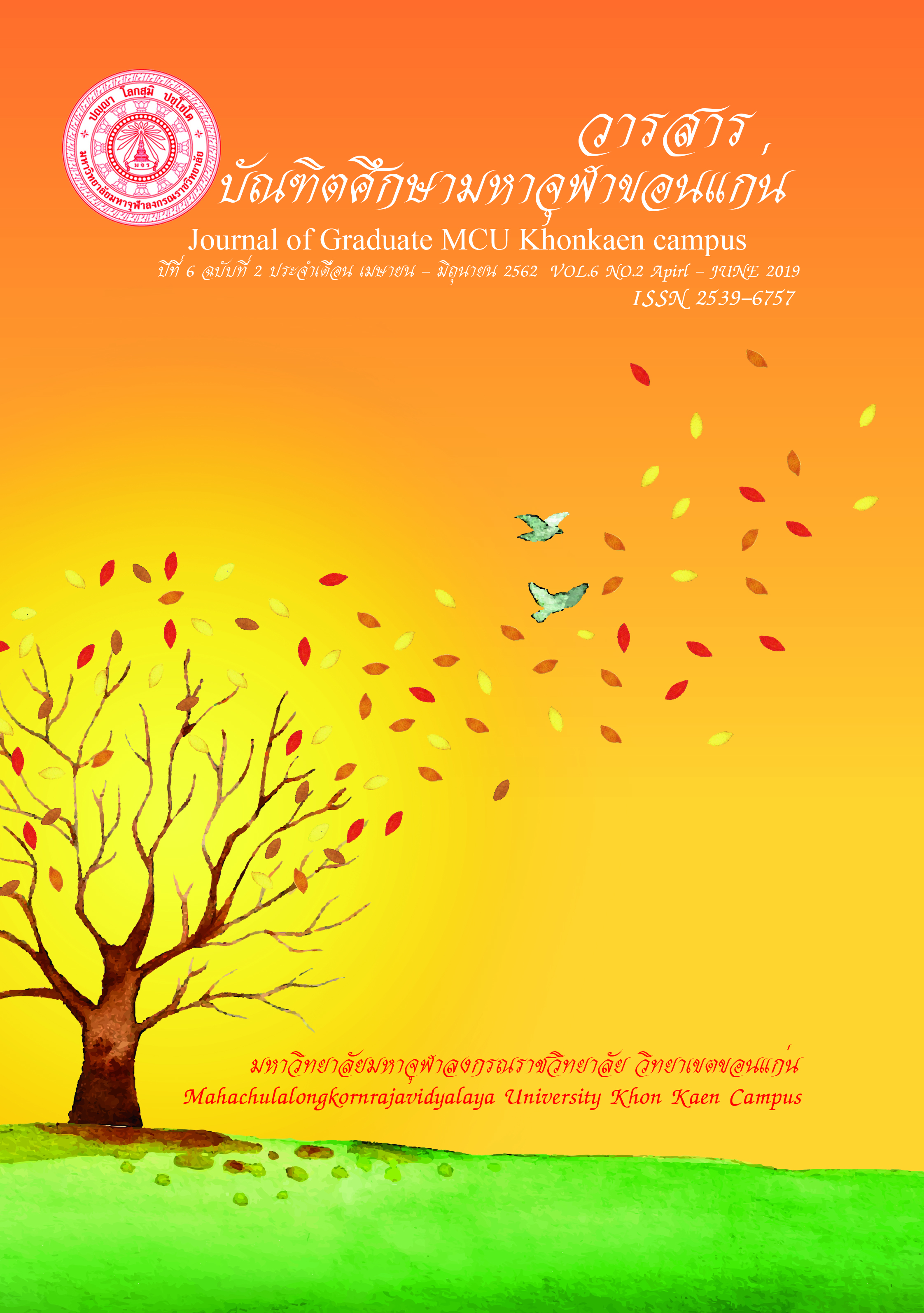A Metaphysical Analysis in the Essence of the Milindapañhā
Main Article Content
Abstract
The aims of this documentary research were: 1) to study the metaphysical concepts in AbhidhammaPiṭaka; 2) to study the essence of the Milindapañhā; 3) to analyze the metaphysics in the essence of the Milindapañhā through the study of the primary and secondary sources and the descriptive analysis based on analytic induction.
The research results were as follows:
1) The metaphysical concepts in the Abhidhamma Piṭaka indicates that the metaphysics means the ultimate realities (paramattha-dhamma) consisting of consciousness (citta): wholesome consciousness (kusala-citta), unwholesome consciousness (akusala-citta) and neither wholesome nor unwholesome consciousness (abyākata-citta), mental factors (cetasika) consisting of the applied characteristics of mental factors IV (cetoyuttalakhaṇa): 1) rise with consciousness (ekuppada) 2) distinguishing with consciousness (ekanirodha) 3) feeling reception as same as consciousness (ekālamupna) 4) reliance on material as consciousness (ekavāthūka); form (rūpa) consisting of 1) rūpasamuddesanaya (mahābhūtarūpa, upādāyarūpa) 2) rūpvibhāgnaya 3) rūpasamuṭthānnaya 4) rūpakalāpnaya and 5) rūppavattikkamanaya; nibbāna consisting of 1) satilakkhaṇa 2) saupādisessa-nibbāna 3) anupādisesa-nibbāna 4) suññata-nibbāna 5) animitta-nibbāna and appaṇihata-nibbāna.
2) The essence of the Milindapañhā shows six parts of the text as follows: 1) former actions of the Nagasena and Milinda; 2) one class question; 3) two class question; 4) knowing by inference; 5) characteristics of dhammas; 6) knowing by analogy. The essence of the Milindapañhā related to the ultimate realities (paramattha-dhamma) including consciousness, mental factors, form and nirvana appears in the form of indirect questions and answers between Milinda and Nagasena.
3) The metaphysics in the essence of the Milinda scripture can be divided into four groups: 1) Milinda’s questions on the ultimate realities (consciousness, mental factors, form and nirvana) 2) Milinda’s questions on the ultimate realities (consciousness, mental factors and form) 3) Milinda’s questions on consciousness and mental factors and 4) Milinda’s questions on nirvana. All are arranged in the form of questions and answers.
Article Details
References
Plus.
Jesada Thongrungroj. (2016). English-Thai Philosophy Dictionary. Bangkok :
Starlight Publishing.
Mahamakutrajavidyalaya. (1979). Visuddhimagga, Pali Edition, Region 3.
Bangkok : Mahamakut Buddhist College.
Mahamakutrajavidyalaya. (2008). Milindapañhā : Translation issue in
Mahamakutrajavidyalaya. (4th ed.). Bangkok : Mahamakut Buddhist
College.
PhraMetheeThammamaporn (Prayoon Thammachitto). (1989). Ancient Greek
Philosophy, Episode 1-2. Bangkok : Amarin Printing Group Co., Ltd.
PhraMahaWisit Panyawattano (Greessawee). (2002). Alternative : An
Analytical Study of the Simile Discussion in Milinda-Panha. Master
of Arts Buddhist Studies. Graduate School : Mahachulalongkorn
rajavidyalaya University Press.
Sathien Phothananta. (2014). History of Buddhism. (4
th ed.). Bangkok:
Mahamakutrajavidyalaya.
Wasin Inthasra. (2013). Explain Milindapañhā. Bangkok : Plain Publishing.

